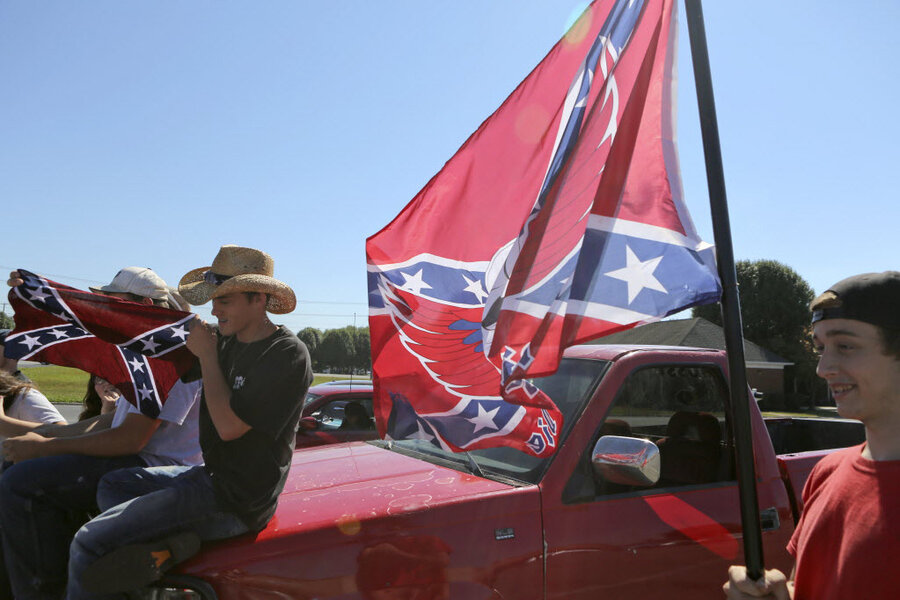Suspended for Confederate flag: Do students have a right to wear the symbol?
Loading...
A Southern high school might be facing a lawsuit by students over prohibition of the Confederate flag.
Virginia students of Christiansburg High School are contemplating legal action after being suspended for wearing Confederate flag symbols. Some 20 students were suspended on Tuesday after refusing to remove clothing with the confederate flag and holding a rally at the school to protest a new ban on vehicles with confederate flag symbols from the school parking lot.
Houston Miller, one of the twenty students suspended, didn’t intend to back down. The suspended students and others were to hold another rally outside the high school on Friday. However, that rally has been called off following concerns about angry comments many of the protesting students were receiving online.
Christiansburg High School’s population is predominately white. State data shows that of 83 percent of the 1,100 students are white and only 8 percent are black.
Attorney Jonathan Arthur told the Associated Press that he has been talking to some of the students about a potential lawsuit against the school. He believes they have a Constitutionally-protected right to wear symbols showing the flag.
Brenda Drake, a spokeswoman for Montgomery County Public Schools, told AP that the school respected the students’ First Amendment rights, but has a responsibility to ensure a safe and orderly environment.
"Continued racial friction suggests that lifting the ban of this particular symbol would cause significant disruption at the school," Ms. Drake said in a statement.
The school has banned the flag since 2002, but the extension of the ban into the parking lot is new this school year.
Confederate symbology became a subject of national debate following the June 17 massacre of nine black worshippers at a church in Charleston, S.C. The man charged with the crime, Dylann Roof, appeared to be racially motivated and had been photographed holding the flag.
The students who refused to remove the Confederate flag symbols, 21 in total, were originally given in-school suspensions, according to Drake. Fifteen of them were sent home the following day after being disruptive. Two students were suspended for additional time.
Senior Morgan Willis attended the rally, but complied with the administration’s request to remove the Confederate flag clothing and symbols. For Ms. Willis, the flag was a symbol of her Southern heritage.
“I understand some people take it as hate, but none of us out there were racist or anything.... I see it as this is your Southern heritage, and if you can't have that, then what can you have?" Ms. Willis said to the AP.
The meaning of the flag is a subject of intense national debate – some believing it is indicative of Southern heritage and others pointing to the flag’s use as a symbol of oppression.
This report includes material from the Associated Press.






